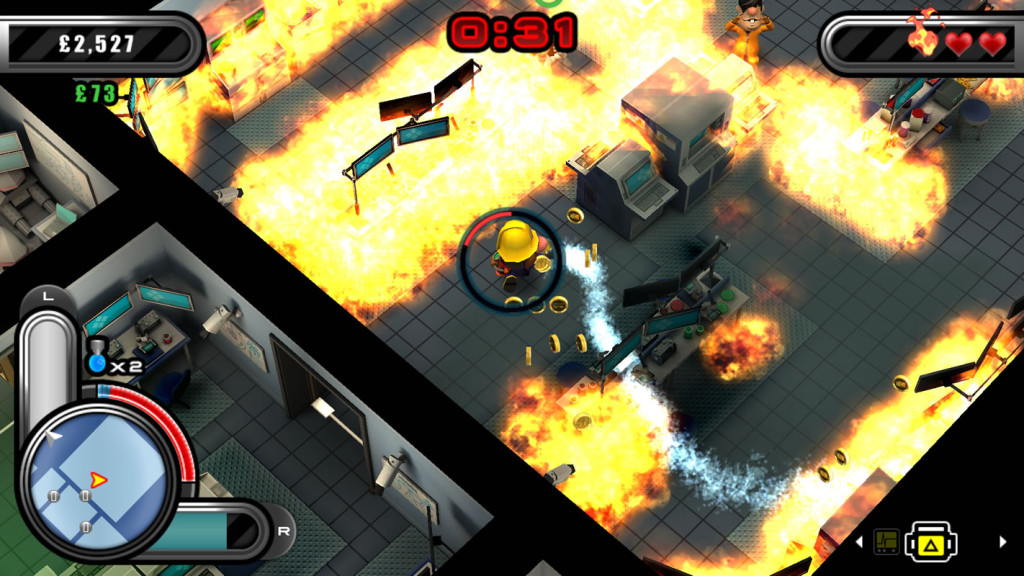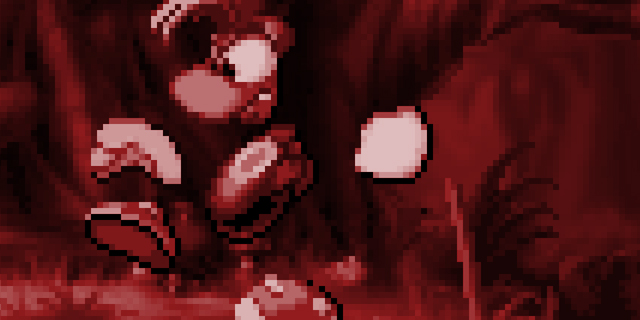
With the rise of mobile and handheld gaming encouraging novel, bite-sized experiences that are still capable of taking creative risks, roguelikes have seen a return to prominence in recent years. Their structure allows for different experiences, with sessions not intended to last more than a few minutes. Games like Spelunky and The Binding of Isaac have received ports to portable systems, and proven that the formula works very well for devices built with a pick-up-and-play mentality. This brings us to Laughing Jackal’s devilishly difficult new entry into the genre, Flame Over, a game with a lot of great ideas that falls short in some tragic ways. READ MORE

10. Shantae and the Pirate’s Curse
2014 was a great year for WayForward, continuing its tradition of releasing uncharacteristically good licensed titles, and having a highly successful Kickstarter for a full HD console game in its own Shantae series. In the midst of all this, it quietly released one of the best Metroidvanias in a great while. Pirate’s Curse polished the exploration mechanics and added interesting new uses for transformations using the extra horsepower of the 3DS, all while sticking to the creative puzzles, clear progression and memorable characterization that makes the series great. READ MORE

Rumors of the death of the shoot-’em-up has been greatly exaggerated. In the aftermath of the Japan-exclusive gold rush of shooters for the Xbox 360, we are starting to see the market stabilize a bit more as independent developers are finding success in the PC market outside of Japan. Leading the charge of localizing doujin games is Fruitbat Factory. Its latest release stars a character that may be familiar to players of 100% Orange Juice, the party game released last year, but the shoot-’em-up gameplay won’t be so similar. We’re going to take a look at how well QP Shooting: Dangerous!! holds up as a shooter compared to its contemporaries. READ MORE

The Mystery Machines series looks at platforms that didn’t stay around quite long enough for most to know their stories. For more, check out the archive.
Portable gaming has always been an anomaly when compared to the rest of the industry. While technical prowess is prized above all else on consoles and computers (for better or worse), handhelds rely on their own set of rules. Long battery life and a compact design are far more important than processing muscle when gaming on the go. When these machines were new to gaming, these unspoken criteria were still developing. Nowhere is this bewildering reversal more apparent than in the Atari Lynx, the former console titan’s only major handheld system. READ MORE

In From Pixels to Polygons, we examine classic game franchises that have survived the long transition from the 8- or 16-bit era to the current console generation. This time, Chris Dominowski and Graham Russell look at Ubisoft’s mascot platformer: Rayman.
Starting in the late ‘80s, it seemed like every gaming company had to have a cartoonish platformer mascot. The trend kicked into high gear in the ‘90s, when advancements in hardware allowed for more expressive characters and worlds that couldn’t have been done on past machines. Many mascots fell to the wayside, failing to live up to the sheer dominance of Mario and Sonic; to be fair, none of them ever did approach that level, but many did at least survive. This is the tale of one such survivor that beat the odds to deliver some superb platformers that a crueler market would have forgotten. READ MORE
























